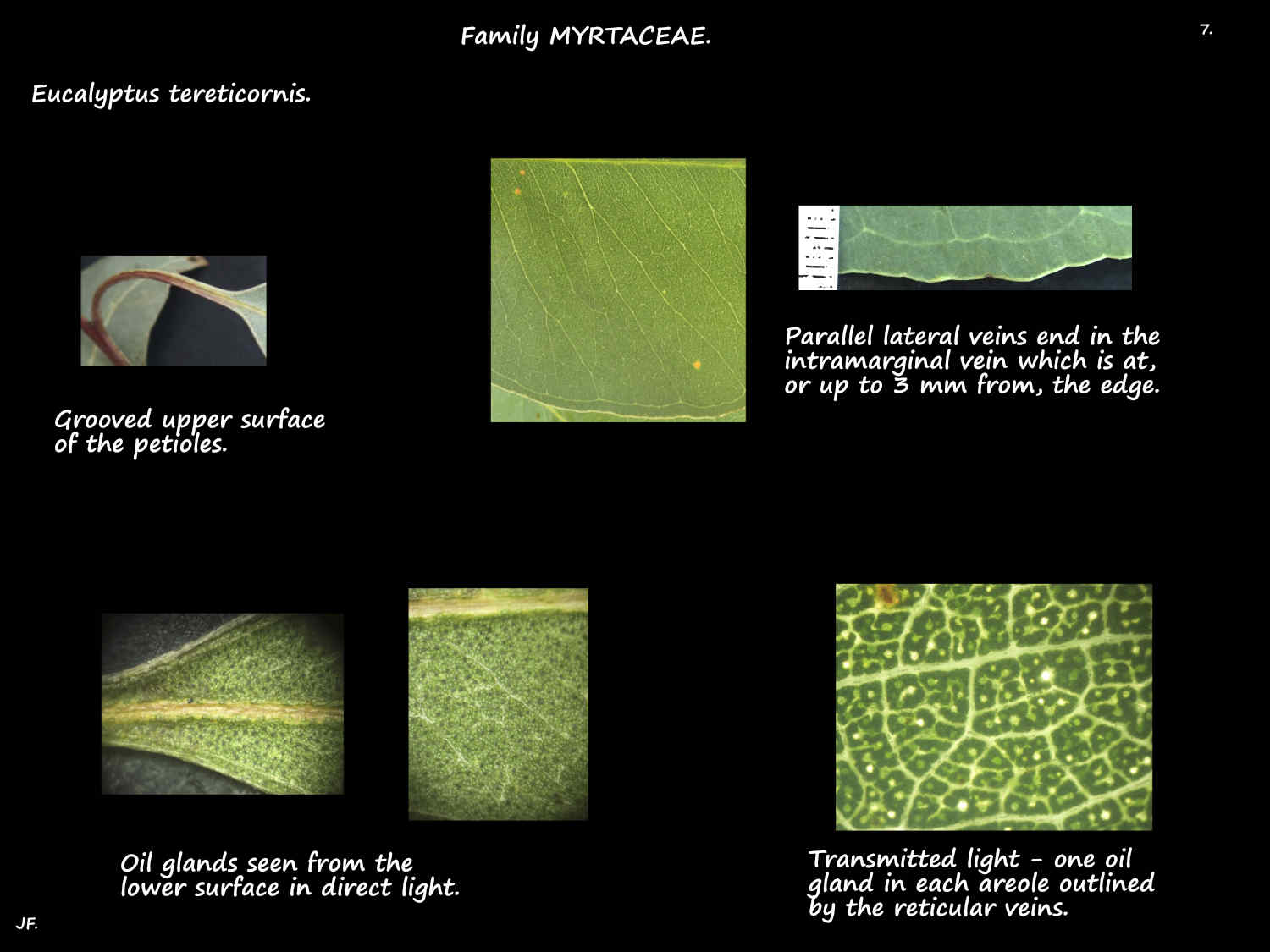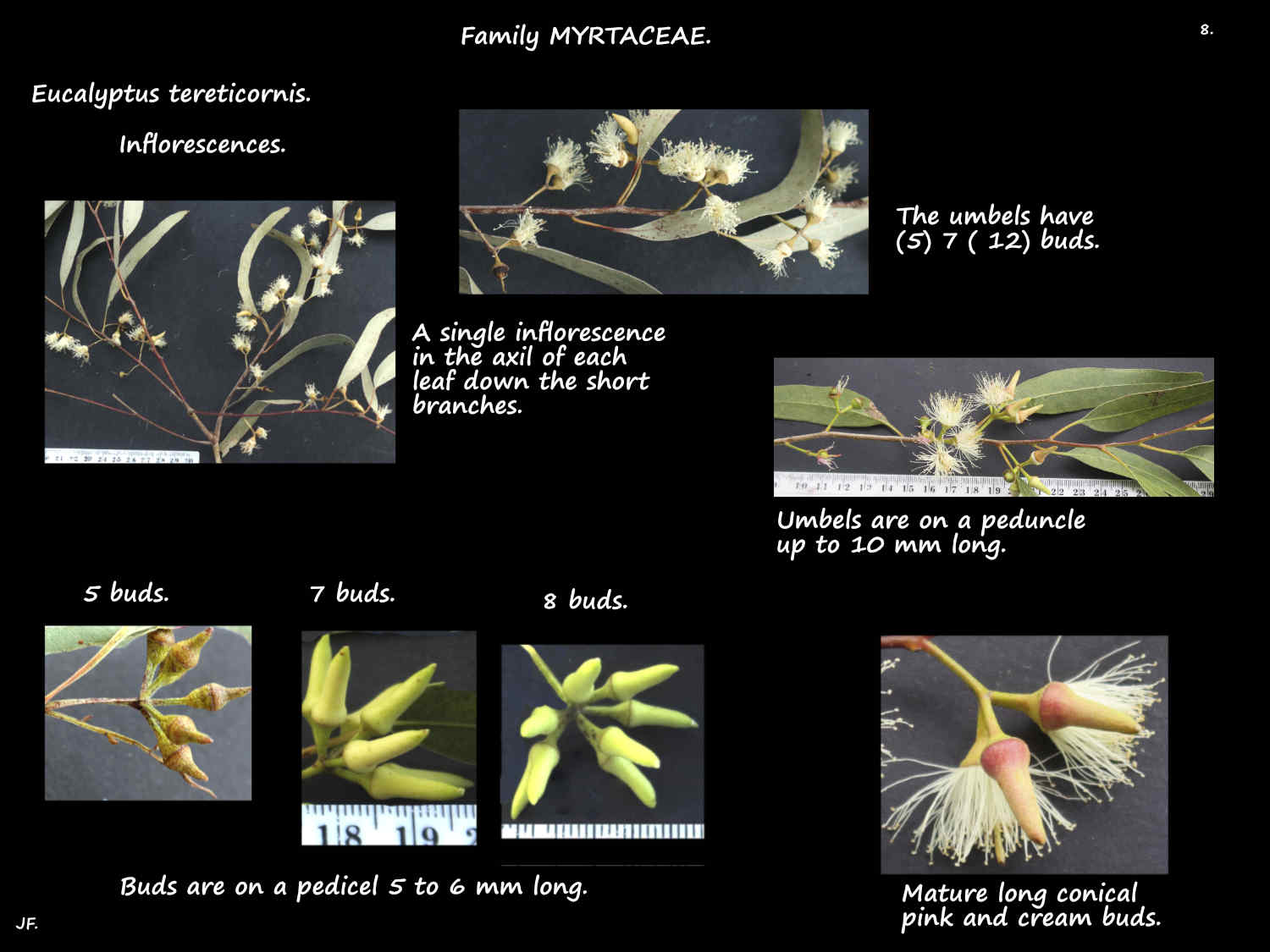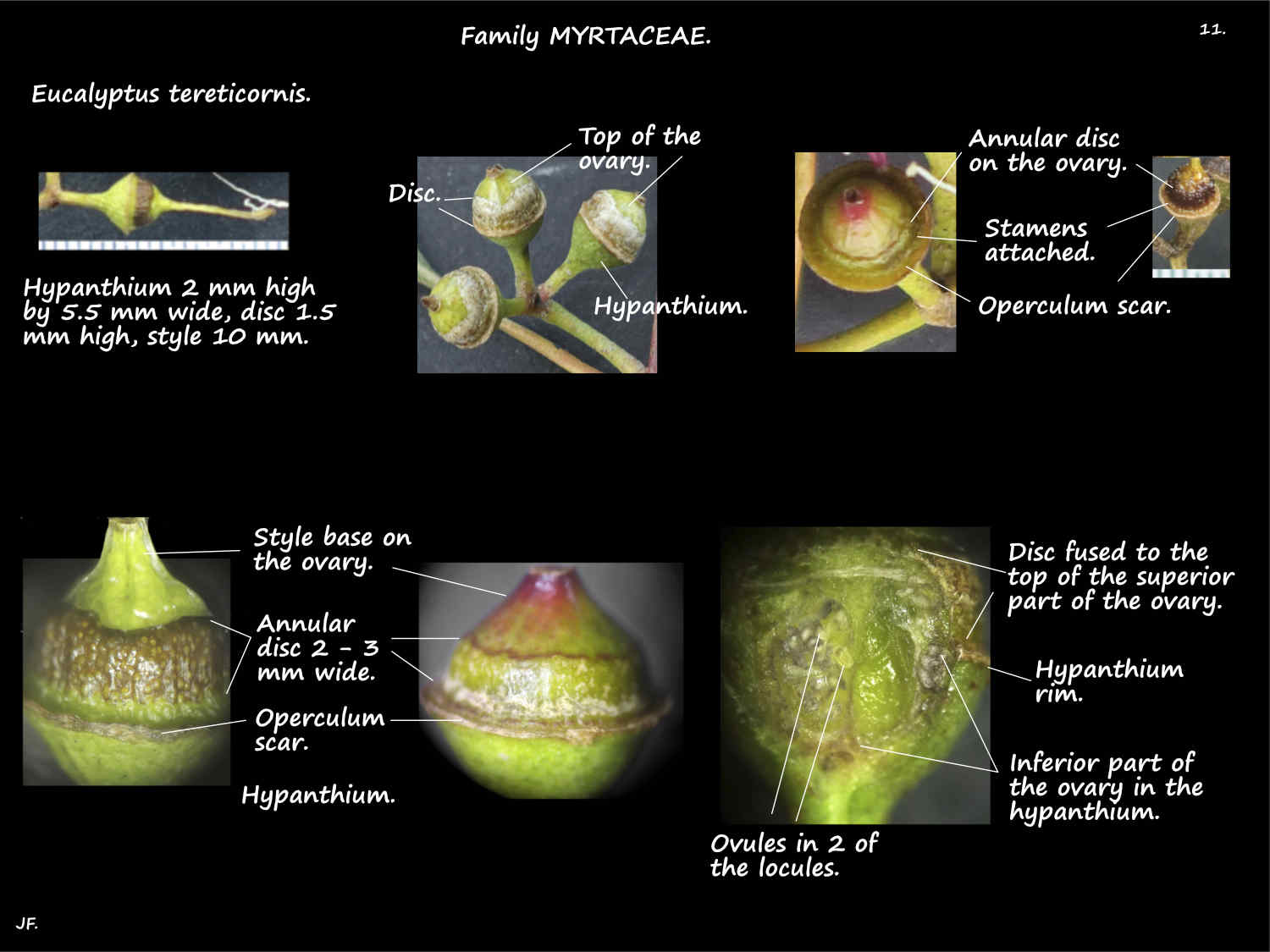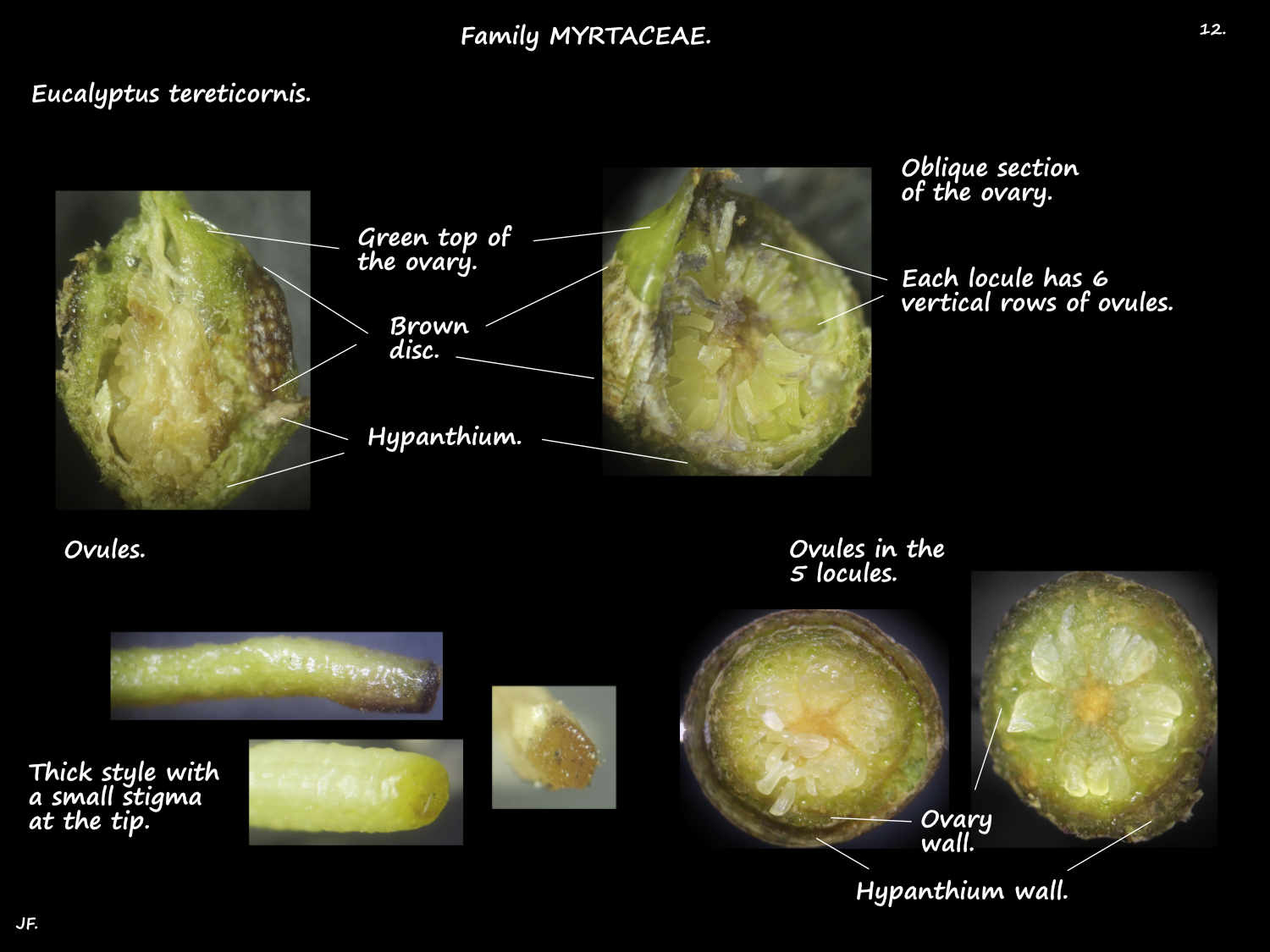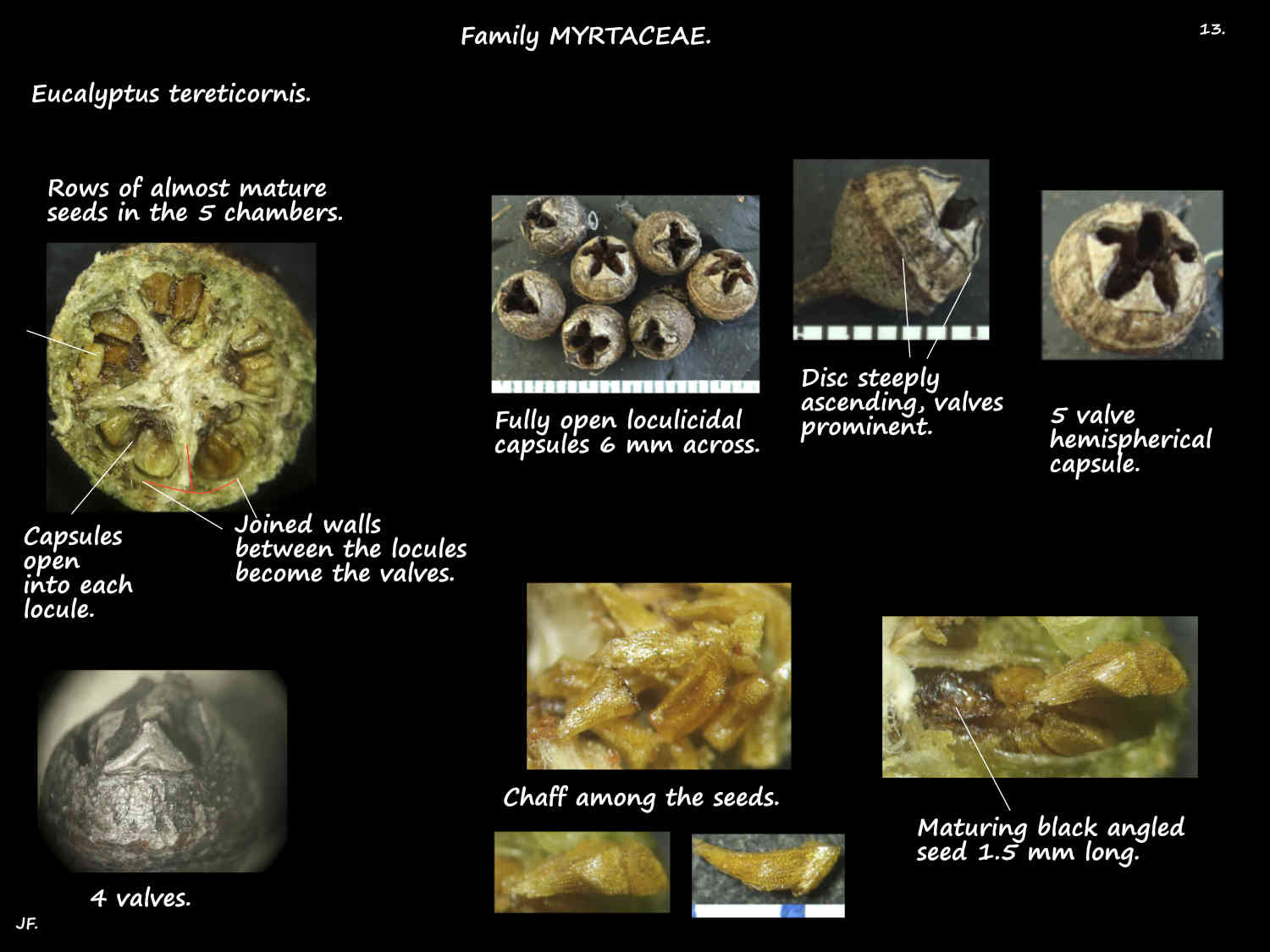Family Myrtaceae > Subfamily Myrtoideae > Tribe Eucalypteae.
Eucalyptus populifolia is a synonym for the Queensland Blue gum.
It is also known as the Forest Red Gum or Red Irongum.
They are very common, and native to, the east coast of Queensland.
Their range extends to Victoria and into New Guinea.
In Brisbane they are mainly seen in parks and along roadsides.
Usually seen around 25 to 30 m high they can be 50 m.
They have a lignotuber which is a swollen area on an underground stem (rhizome).
The erect trunk, up to half the tree can be 1 to 2 m wide at the base.
Each year the trees shed most of their old brown or reddish-brown bark.
This is shed in thick irregular flakes, plates or strips.
Some remains at the base and the lower 1 to 2 m of the trunk.
The smooth new bark has a mottled appearance as each newly exposed area goes through colour changes.
Colours include yellow, cream, pink, grey, blue and eventually white.
Thick side branches rise steeply sometimes almost vertically.
The thick or thin crown can be around 25 m across.
Small twigs are often square in cross section and may have wings.
Juvenile leaves, on a petiole are opposite at the first few nodes then alternate.
The ovate to wide lance-shaped leaves can be 15 to 20 cm long and 10 cm wide.
The blue-green or green blades are sometimes slightly paler on the lower surface.
The narrow lance or sickle-shape adult leaves, on a petiole are alternate.
The 2 to 2.5 cm long petiole is round or has a flattened or grooved upper surface.
The thick blades are up to 20 or 25 cm long and 2 to 3 (3.5) cm wide.
The base is wedge-shaped and the tip tapers to a point.
They are the same green, grey-green or blue-green on both surfaces.
The many parallel lateral veins are at an angle of over 45 degrees to the midrib.
They end in the intramarginal vein which is within 2 or 3 mms of the blade edge.
Each areole (areas outlined by the reticular veins) has an oil gland.
Axillary inflorescences are a solitary umbel on a peduncle 5 to 10 (12) mm long.
Each umbel has (5) 7 (9) buds on pedicels 5 to 8 (10) mm long.
Buds have a basal hypanthium and an operculum or lid.
The hypanthium is formed by fusion of the sepal and stamen filament bases.
The green or yellow-green hypanthium is around 3 mm long and 5 mm wide.
The operculum, of fused sepal lobes is also known as the calyptra or calyx tube.
The conical operculum, up to 10 (15) mm long is one of the longest seen in gums.
When the stamens are mature it falls off leaving a scar on the hypanthium rim.
Numerous free stamen filaments are attached to the rim of the hypanthium between the operculum and the disc.
In the bud the filaments lie vertically around the style.
The white filaments, 1 to 1.5 cm long give the flowers their colour.
Dorsifixed anthers open through longitudinal slits.
The disc is an annular band attached to the rim of the hypanthium inside the operculum and stamens.
A few mms high it is fused to the top of the ovary.
The mostly inferior ovary has 4 or 5 locules each with 6 vertical rows of ovules.
The stout style has a small stigma.
Fruit are a loculicidal capsule (gumnut) on a short stalk.
Most of it lies within the hemispherical woody hypanthium.
The domed top of the ovary, and the disc fused to it, lie above the hypanthium.
The disc is said to be steeply ascending.
Compared to the size of old trees the capsules are tiny.
Published measurements range from 2 to 20 mm long and 4 to 10 mm wide.
(One Key says they have to be over 6 mm wide. Those seen here are around 6 mm.)
The valves are the 4 or 5 wide pointed tips of the capsule walls.
The inwards curved tips extend well past the hypanthium rim and the disc.
The black or blackish-brown angled and pitted seeds are around 1 to 1.5 mm long.
There are 4 subspecies described with 3 restricted to small areas away from S.E. Queensland.
The fourth, var. tereticornis is a synonym of E. teriticornis.
J.F.







